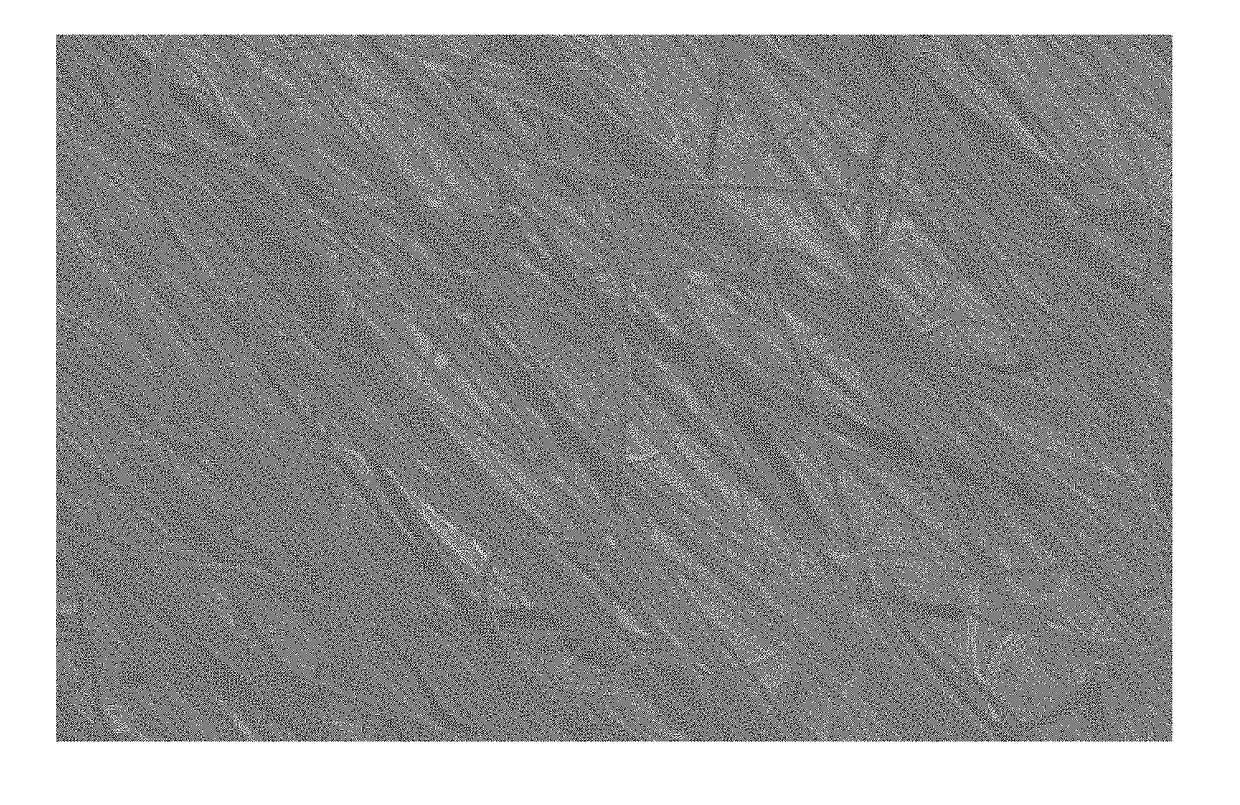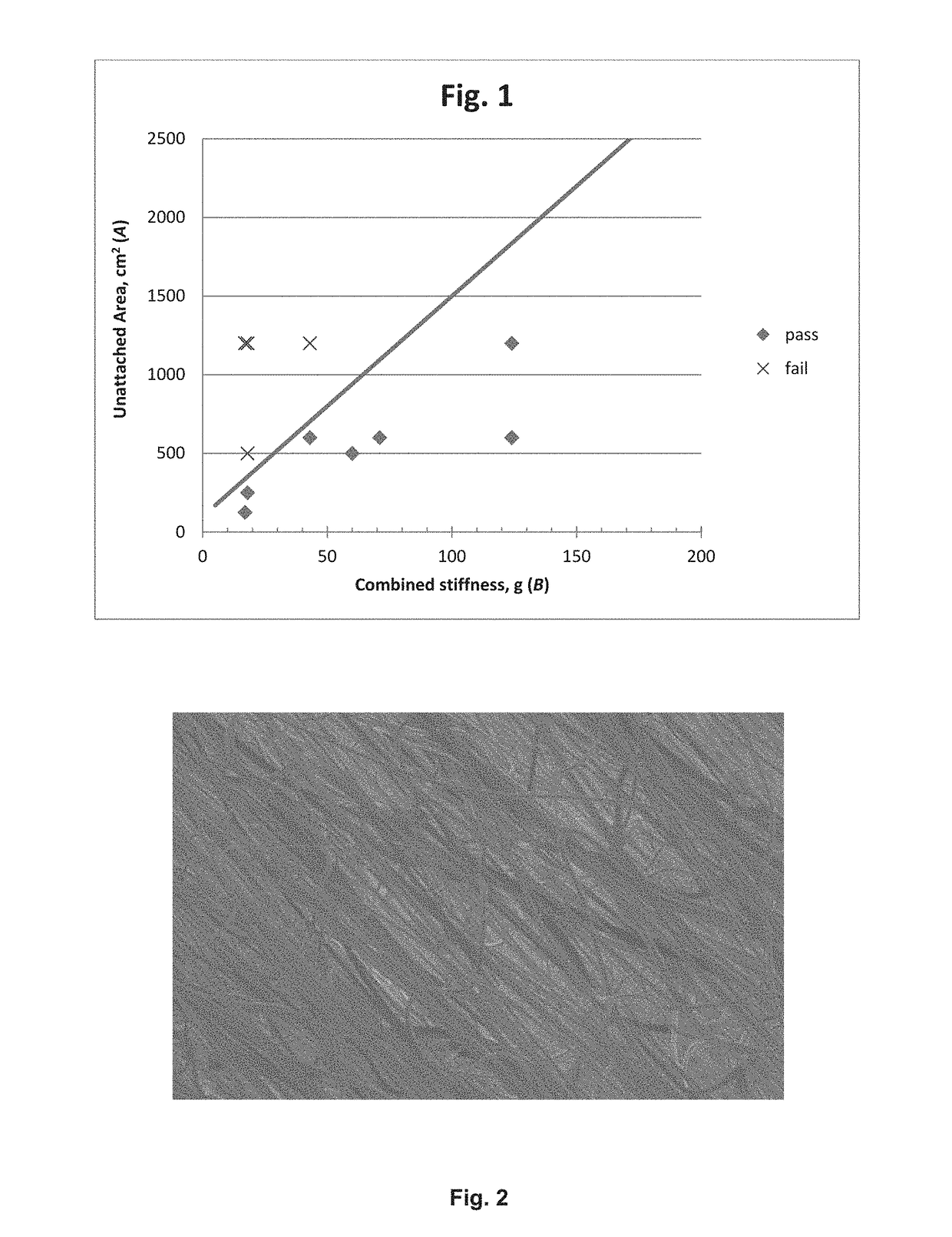Flame and particulate resistant knit article
a technology of particulate and knitted objects, which is applied in the direction of knitting, chemical protection, transportation and packaging, etc., can solve the problems of destroying the lightweight nanoweb, not fully understanding or appreciated, and the health threat posed by the deposition of particulate on the skin of smoke,
- Summary
- Abstract
- Description
- Claims
- Application Information
AI Technical Summary
Benefits of technology
Problems solved by technology
Method used
Image
Examples
example 1
[0053]Several precursor nonwoven sheets for forming nonwoven fabrics N1 to N7, were made by electroblowing a polyamic acid (PAA) solution comprising pyromellitic dianhydride (PMDA), oxy-dianiline (ODA) and dimethylformamide (DMF) into precursor nonwoven sheets of generally continuous polymer precursor filaments a manner similar to the process described in U.S. Pat. No. 7,618,579 and U.S. Pat. App. Pub. No. 2011 / 0144297. The precursor sheets were then further treated in a horizontal infrared oven without web restriction in the cross web direction as follows.
[0054]Highly elastic nonwoven fabric N1 was made by consecutive stretching and imidization of a precursor nonwoven sheet in accordance with the disclosure of United States Patent Appl. Pub. No. US2015 / 109063 to Simmonds et al. In this process, the precursor sheet was drawn to align and orient the filaments in the machine direction, and the drawn precursor sheet was then exposed to heat to complete the heat setting (i.e., imidizati...
example 2
[0063]Select durable to laundry laminates from Example 1 were subjected to the filtration efficiency testing using salt (NaCl) particles in a range of 0.1-0.8 micrometers and face velocities of 0.4 cm / s. The filtration efficiency results for 0.3 micrometer particles are presented in the Table 4. It is clear that the laminates maintain very good particle filtration efficiency after 20 washing cycles.
TABLE 4FiltrationFiltrationEfficiency,Efficiency,BeforeAfter 20Side 1Side 2NonwovenWashing,Cycles,LaminateknitknitFabric(%)(%)1-222N399.999.81-434N399.198.91-744N49995.81-844N598.987
PUM
| Property | Measurement | Unit |
|---|---|---|
| diameter | aaaaa | aaaaa |
| durable | aaaaa | aaaaa |
| modulus | aaaaa | aaaaa |
Abstract
Description
Claims
Application Information
 Login to View More
Login to View More - R&D
- Intellectual Property
- Life Sciences
- Materials
- Tech Scout
- Unparalleled Data Quality
- Higher Quality Content
- 60% Fewer Hallucinations
Browse by: Latest US Patents, China's latest patents, Technical Efficacy Thesaurus, Application Domain, Technology Topic, Popular Technical Reports.
© 2025 PatSnap. All rights reserved.Legal|Privacy policy|Modern Slavery Act Transparency Statement|Sitemap|About US| Contact US: help@patsnap.com


